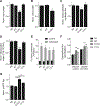Oncogenic R132 IDH1 Mutations Limit NADPH for De Novo Lipogenesis through (D)2-Hydroxyglutarate Production in Fibrosarcoma Sells
- PMID: 30355481
- PMCID: PMC6613636
- DOI: 10.1016/j.celrep.2018.09.074
Oncogenic R132 IDH1 Mutations Limit NADPH for De Novo Lipogenesis through (D)2-Hydroxyglutarate Production in Fibrosarcoma Sells
Erratum in
-
Oncogenic R132 IDH1 Mutations Limit NADPH for De Novo Lipogenesis through (D)2-Hydroxyglutarate Production in Fibrosarcoma Cells.Cell Rep. 2018 Nov 6;25(6):1680. doi: 10.1016/j.celrep.2018.10.099. Cell Rep. 2018. PMID: 30404018 Free PMC article. No abstract available.
Abstract
Neomorphic mutations in NADP-dependent isocitrate dehydrogenases (IDH1 and IDH2) contribute to tumorigenesis in several cancers. Although significant research has focused on the hypermethylation phenotypes associated with (D)2-hydroxyglutarate (D2HG) accumulation, the metabolic consequences of these mutations may also provide therapeutic opportunities. Here we apply flux-based approaches to genetically engineered cell lines with an endogenous IDH1 mutation to examine the metabolic impacts of increased D2HG production and altered IDH flux as a function of IDH1 mutation or expression. D2HG synthesis in IDH1-mutant cells consumes NADPH at rates similar to de novo lipogenesis. IDH1-mutant cells exhibit increased dependence on exogenous lipid sources for in vitro growth, as removal of medium lipids slows growth more dramatically in IDH1-mutant cells compared with those expressing wild-type or enzymatically inactive alleles. NADPH regeneration may be limiting for lipogenesis and potentially redox homeostasis in IDH1-mutant cells, highlighting critical links between cellular biosynthesis and redox metabolism.
Keywords: 2-hydroxyglutrate (2HG); IDH1; IDH2; NADPH; cancer; deuterium; metabolic flux analysis; metabolism; redox metabolism.
Copyright © 2018 The Authors. Published by Elsevier Inc. All rights reserved.
Conflict of interest statement
DECLARATION OF INTERESTS
C.M.M. has previously consulted for Agios Pharmaceuticals.
Figures




References
Publication types
MeSH terms
Substances
Grants and funding
LinkOut - more resources
Full Text Sources
Miscellaneous

